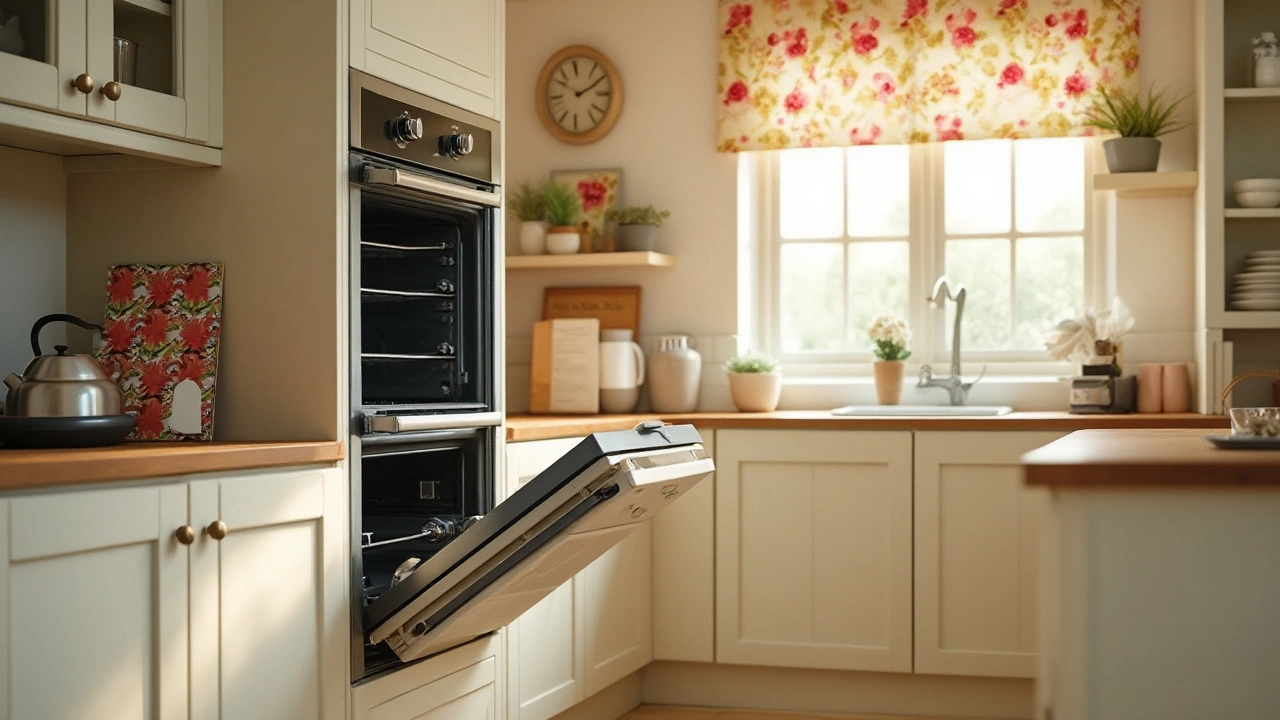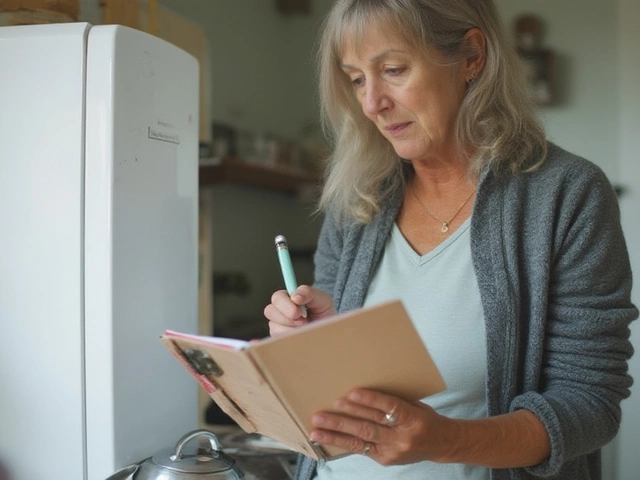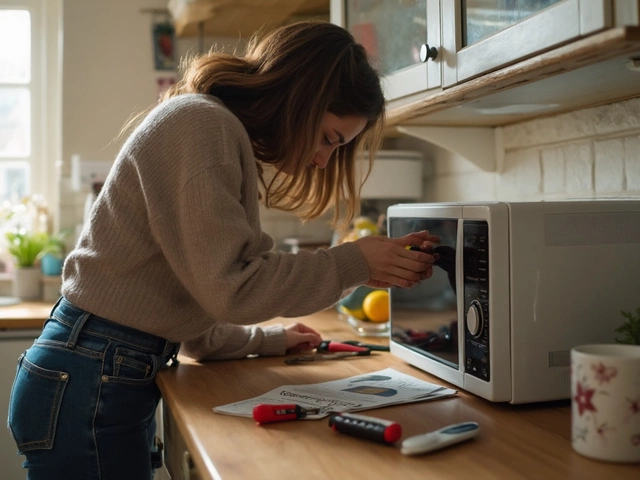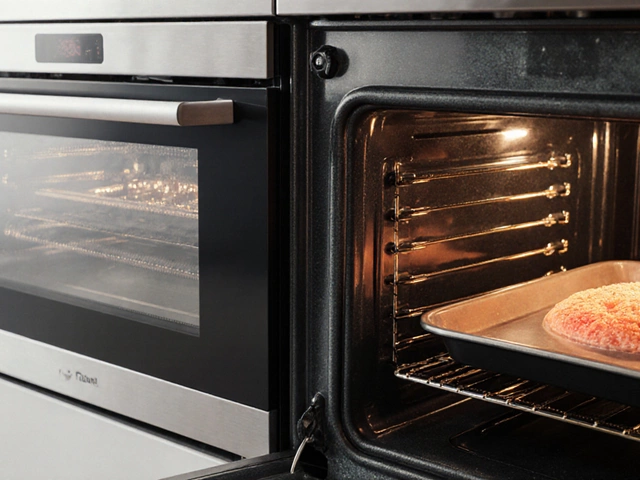Embarking on the journey to replace your electric oven might appear like a mountain to climb. However, with a pinch of patience and a dash of know-how, the task becomes much more approachable. In today's fast-paced living, an efficient and reliable oven is a staple in any kitchen.
While the idea of installation may seem nerve-wracking, understanding the steps and considering the right type of appliance for your space can turn this task into a rewarding DIY project. Or, it might steer you in the direction of professional help, ensuring all goes smoothly without a hitch.
There are several components to examine before diving into the replacement process—be it compatibility, safety, or the route you wish to take for installation. In this article, we break down the essentials, providing guidance to ensure your kitchen is running at its best, all while maintaining safety and efficiency.
- Understanding Your Current Setup
- Choosing the Right Replacement Model
- Installation Process Overview
- DIY or Hire a Professional?
- Safety Tips and Considerations
Understanding Your Current Setup
Before diving into the task of replacing your electric oven, it is essential to wrap your head around the current layout of your kitchen. Knowing your setup not only makes the transition smoother but also helps in identifying the right features for your new appliance. Start by examining the dimensions of the existing oven. Electric ovens come in various standard sizes, so grabbing a tape measure and noting the height, width, and depth can save numerous headaches later.
Next, consider the power specifications. Electric ovens need a dedicated circuit due to the power they consume. Most residential kitchens are equipped with a 240-volt outlet for the oven. Check the back of the oven or the manual for specific power requirements, which should be compliant with what your home's electrical system can provide. Verifying this beforehand cushions against surprises in the installation phase.
Another critical factor is ventilation. Modern ovens often come with their own venting systems, but understanding how your current oven handles air circulation can influence what model you choose. Some kitchens rely on external ventilation like range hoods or exhaust fans. Make notes of these before running to the store to ensure compatibility.
Material and finishes of your current setup could also influence your choice. Are your countertops and cabinetry set in a contemporary style, or do they have a classic, rustic appeal? Understanding these aesthetics helps when selecting an oven that complements your kitchen. It’s all about maintaining a cohesive look that ties together the heart of your home.
No less important is the logistics of installation space. Assess if you have ample space to maneuver the new unit into place without hassle. This is especially crucial if you're planning on a DIY oven installation. If ranked by importance, space and ease of access sit right up there. Historic homes may have quirks that modern kitchens don't, which sometimes require creative problem solving.
"Safety first is safety always." - Charles M. Hayes
And remember, safety concerns aren't to be taken lightly. Ensure you have easy access to shut-off valves and other safety mechanisms. Having these precautions in place prevents accidents during the installation and while the oven is in use.
As you enter into replacing an electric oven, be armed with knowledge about your current setup. This critical insight ensures that the new appliance fits well with your home’s structure and aesthetic, making the culinary heart of your home both functional and visually pleasing.
Choosing the Right Replacement Model
When your trusty electric oven has finally served its last roast, and you're eyeing a replacement, choosing the right model can be both exciting and overwhelming. Considering the myriad of options jostling for attention on the market, it’s crucial to evaluate a few key factors. Firstly, the size of the oven is of paramount importance. As electric ovens typically come in standard 24, 27, and 30-inch widths, measuring the cavity where the oven will fit ensures a seamless installation. This seemingly simple step can save you from the heartache of purchasing a glorious new oven that alas, doesn't fit your kitchen.
Model features rank high on the priority list, too. Today’s electric ovens come with an array of bells and whistles, each designed to make life just a tad easier. Features like convection cooking, which uses fans to circulate air for more even heating, are extraordinarily popular. For some, self-cleaning functions eliminate the drudgery of scrubbing the oven. A study from Appliance Retailer found that 70% of consumers preferred energy-efficient models, often marked by the ENERGY STAR label, which save on long-term electricity bills while reducing environmental impact.
"Energy efficiency has become a significant selling point for modern appliances," says Cindy Alvarez, a renowned kitchen appliance expert. "It's advisable to compare the energy consumption rates found on the EnergyGuide label when selecting your new model."
Another vital aspect is to decide if the oven should be standalone or built-in, depending on the design of your kitchen and your culinary habits. Built-in ovens can blend into your cabinetry, giving a sleek and modern finish, while standalone units offer flexibility and ease of access. Additionally, whether you frequently bake, roast, or reheat can guide you towards more tailored options like double ovens or those with integrated settings for specific cooking methods.
Let's not forget the budgetary constraints. The price range for electric ovens can stretch substantially. On the lower end, models might hover around a couple of hundred dollars, while high-end options, boasting technological advancements, can soar into the thousands. While various models might catch the eye with their aesthetic or advanced features, aligning purchase choices with budgetary limits is not only pragmatic but smart. Considering warranties and reviewing consumer feedback on reliability can further refine choices, ensuring the investment is sound.
Lastly, pay heed to compatibility, especially if you're replacing an old trusted electric oven. The power supply and specifications need to match, ensuring no nasty surprises when you go to plug in the new device. If technical terms make your head spin, consulting the manufacturer's guidelines or a professional consultation can be invaluable. These steps ensure you not only choose a model that fits but one that enriches your culinary endeavors for years to come.
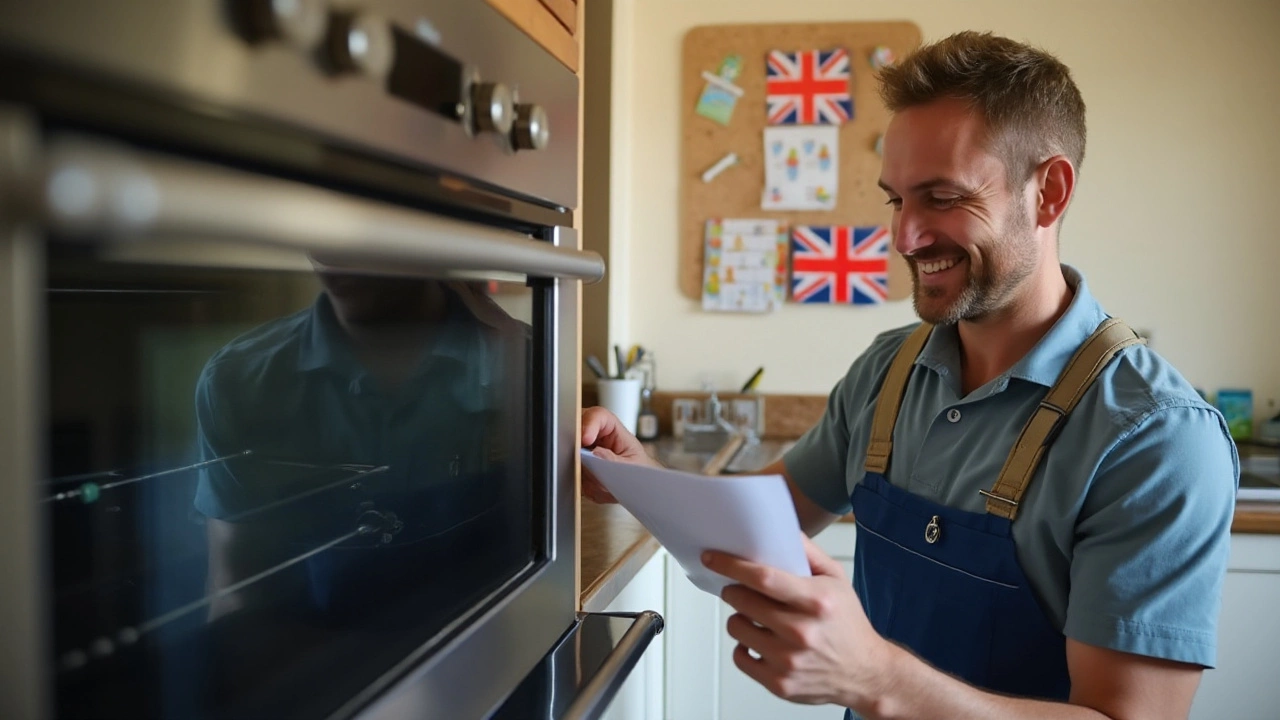
Installation Process Overview
The task of installing a new oven might seem overwhelming at first, but with the right steps and tools, it can be a manageable and even satisfying home project. First and foremost, it is crucial to prepare your kitchen space and ensure that the electrical setup supports your new appliance. Most modern electric ovens require a 240-volt circuit, so it’s essential to verify that your kitchen’s power setup meets this requirement.
Before diving into the dirty work, always remember the golden rule of home installations: safety first. Turn off the power supply to the area to avoid any electrical hazards. Get accustomed to the specifications of your new oven. Understanding these will help during the installation and prevent any missteps. For those who may be replacing a smaller or older unit, double-check that the dimensions align correctly. It’s often surprising how a slight miscalculation can throw the entire process off-track.
Let’s tackle the physical install now. The first step in the installation process often involves removing the old unit. Carefully disconnect the oven from the wall outlet and gather assistance if needed; electric ovens are heavier than they appear, and awkward lifting can lead to injury. Once the old unit is out, take the opportunity to clean and inspect the area. You might find grease and grime lurking, which could affect the performance of the new oven if not dealt with properly.
According to 'Home Improvement Expert', "The initial stages of appliance installation are crucial. Not only do they set the stage for successful setup, but they also help avert potential accidents or damages in the future."
Positioning the new oven involves carefully aligning it with the allocated space and ensuring it is secure. This part of the process can be particularly tricky, especially if space is limited. Many installations require you to thread the oven's power cable through a wall space or cabinet opening, which can sometimes necessitate drilling a hole. Once this is managed, plugging in the unit should be straightforward if you have ensured compatibility with your power source.
A key point to remember is making sure everything is level. Using a spirit level to check that the oven sits perfectly can help avoid uneven cooking results. After securing and leveling, you may need to anchor the oven to prevent it from tipping. This is especially critical in households with children for safety reasons.
Upon completion of these steps, a test run of the oven is advisable. Turn the power back on and run the oven for a short time to confirm it functions correctly. Listen for any unusual noises and monitor for any electrical issues or odd smells. If everything appears to be operating as expected, it’s likely you’ve succeeded in your oven installation endeavor. With the oven humming along nicely, all that remains is to enjoy your new appliance—whether tackling a tricky soufflé or a simple batch of cookies, your kitchen will now be better for it.
DIY or Hire a Professional?
Deciding between undertaking the task of electric oven replacement yourself or hiring a professional can be influenced by numerous factors. For DIY enthusiasts, the project offers a satisfying way to flex your skills and save some cash. However, it's not just about swapping out one oven for another; the complexity can escalate rapidly depending on your existing setup. Compatibility issues, electrical connections, and safety regulations are critical factors to consider. The idea of handling these intricacies might thrill the experienced, yet daunt a novice.
Most modern homes adhere to standard spaces and voltages for appliances, but nuanced differences often exist. You might find, for example, that your new model requires a different type of wiring or that it doesn't fit in the allocated space. For a detailed installation guide, you might follow these general steps: removing the old oven, modifying cabinetry, connecting electrical wires safely, fastening the new model securely, and testing it for efficient operation. However, it’s crucial to note that these are just the basic steps. A misstep not only risks damaging the appliance but also endangers your home.
According to the National Fire Protection Association, cooking equipment, particularly heating elements, was the leading cause of home fires between 2015 and 2019. Safety cannot be overemphasized when dealing with electric appliances.
On the flip side, hiring a professional ensures a smooth installation without the headaches of troubleshooting potential issues. Professionals boast experience and knowledge of local codes and safety regulations. This might involve some investment upfront, but the price often outweighs the potential cost of error during a DIY attempt. It's worth noting that appliance installation charges tend to range between $100 and $500, depending on the complexity and location. A professional technician's assurance of a job well-done can provide priceless peace of mind.
If you are tech-savvy and have the appropriate tools and safety gear, taking the DIY route could work in your favor. But for those who’d rather avoid the risk and hassle, a certified technician can offer reliable expertise. While the idea of fixing your beloved kitchen appliance feels enriching, sometimes, leaving things to the experts ensures that both you and your new kitchen appliance installation stay safe and sound. Ultimately, the decision to tackle a DIY oven installation or call on a professional should align with your comfort level, knowledge, and the particulars of your unique situation.
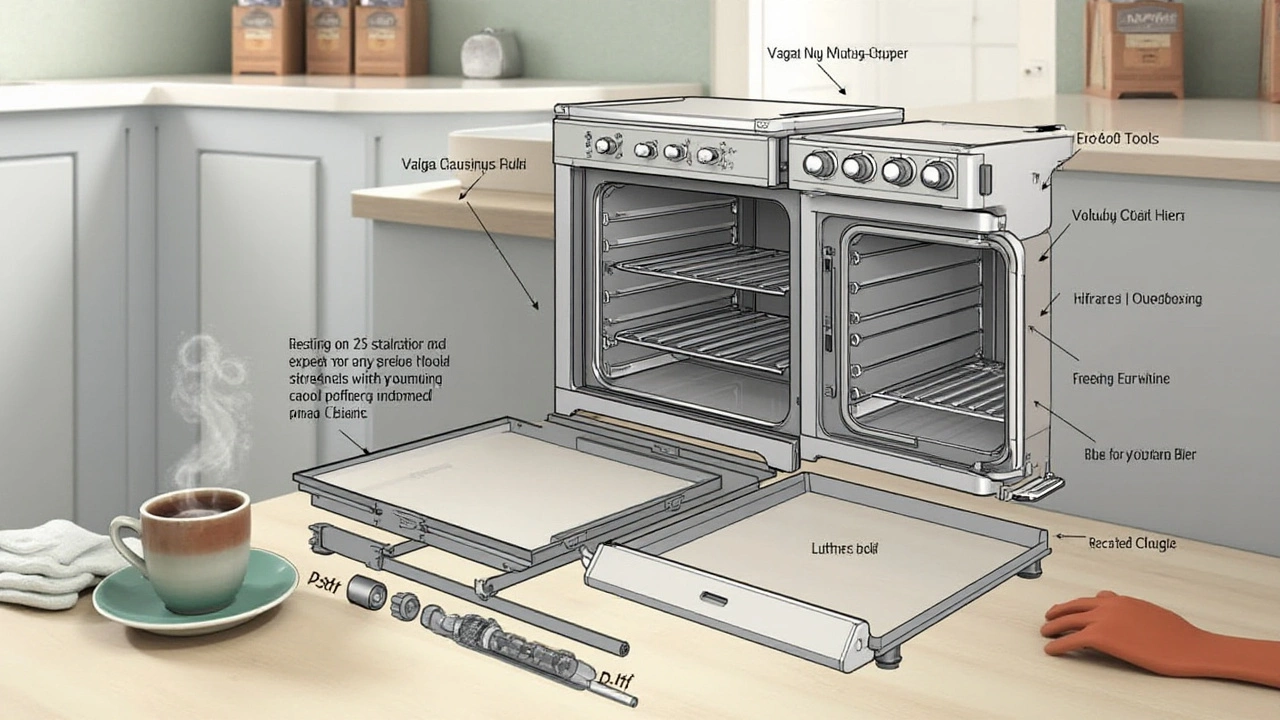
Safety Tips and Considerations
When it comes to installing or replacing an electric oven, safety should always be your top priority. Electricity and ignorance make a dangerous pair, so it’s crucial to understand the potential risks and how to mitigate them effectively. The first step involves turning off the power supply at the main breaker. One might think switching off the oven's power button is sufficient, but don't make this mistake. Ensuring the main power source is disabled eliminates the risk of electric shock. Additionally, it’s wise to test the outlet with a voltage meter to confirm there's no lingering electrical current. This simple step helps avoid a shocking situation, literally, and can save you a trip to the emergency room.
Equally important is the proper handling of materials during the installation. Modern ovens can weigh over a hundred pounds. Use a trolley or enlist a friend's help when moving the appliance into position. Bewaring of back strains or drops that can damage floors is essential. Many experts recommend wearing gloves to prevent injury from sharp edges or corners during the setup process. Once in position, check the oven’s alignment—you want it to be perfectly level for both aesthetic and functional reasons. A tilted oven can lead to cooking inconsistencies, which no budding chef wants.DIY oven installation is all about precision and care.
Before locking the oven into place, inspect the condition of electrical cords and connections. Any signs of wear and tear indicate a need for replacement. Old or frayed wires are a fire hazard waiting to happen. It’s at this stage where professional oversight can be invaluable. According to a recent survey among repair technicians, around 35% noted that faulty wiring was a common issue in oven installations. Regular maintenance checks after installation minimize such risks, prolonging the life of your appliance.
"When working with electric appliances, always double-check your steps. A safe installation is a successful one," advises Neil Horton, a veteran electrician with over 30 years in appliance repairs.Keep a fire extinguisher nearby just in case. Proper ventilation is another key facet as it disperses heat and any residual fumes efficiently. Bear in mind that your kitchen should not only function well but also serve as a safe haven. Incorporating simple measures like these ensures long-term safety and enhances the durability of your oven, making it a beneficial addition to your culinary space.
